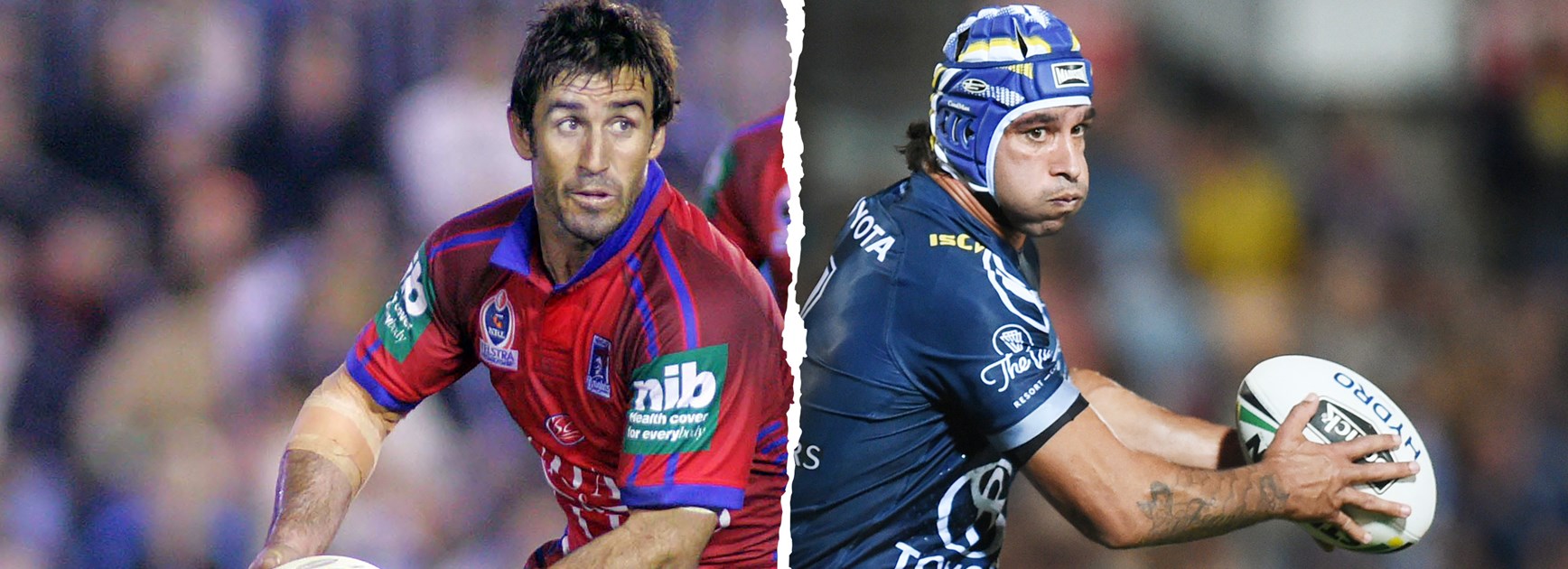
NRL.com opened a can of worms when we asked our readers to vote on the best halfback of the last 30 years in our Simply The Best series of polls.
It ultimately came down to Cowboys maestro Johnathan Thurston against Newcastle's favourite son, Andrew Johns.
And after more than 136,000 votes, Thurston edged out Johns.
But that doesn't settle the debate. As part of NRL.com's For & Against series, we look at whether Thurston did enough to dethrone Johns as the best No.7 of the past three decades.
For
NRL.com editor Paul Suttor
Andrew Johns is already an Immortal and there’s no denying Johnathan Thurston will join him in rugby league’s most illustrious club in the future.
Both players have astounding records that put them in the pantheon of greats.
Johns was one of the most dominant players of the modern era but when you stack up his record against Thurston’s, it’s the Cowboys legend who had the better career.
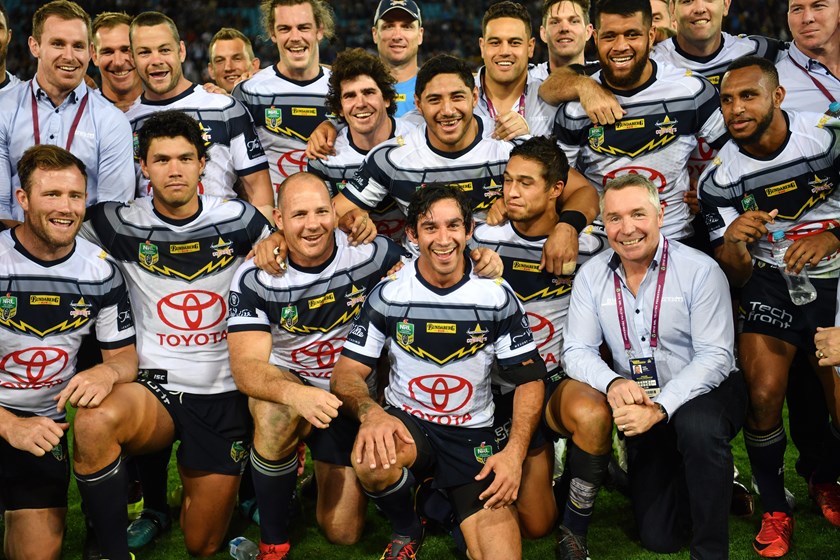
The head-to-head debate over these two has mirrored the NBA argument over whether LeBron James can lay claim to being the greatest basketballer of all time ahead of Michael Jordan.
Older fans are adamant Jordan will never be surpassed but younger hoops followers thing King James can take the throne - sidebar, he can’t. Jordan was better.
In rugby league, the older brigade side with Johns and those who grew up with Thurston triumphing at club, state and international level, believe he is the pinnacle of playmakers.
Just like any endless sports debate comparing players of different eras, there are infinite ways to reach a verdict.
If you view it through the old “on their day” lens, then Johns had a greater ability to affect a result when he was in the zone.
However, if you look at sustained excellence over a longer time frame, Thurston was the better player.
A wise man once said “people can come up with statistics to prove anything, forfty per cent of all people know that” but the raw numbers give JT the edge.
His resume is 38 Tests, 37 Origins and 323 games for the Bulldogs and North Queensland.
Johns racked up 23 Tests, the same number of NSW appearances and 249 games over a 15-year career at Newcastle which was cruelly cut short by a neck injury.
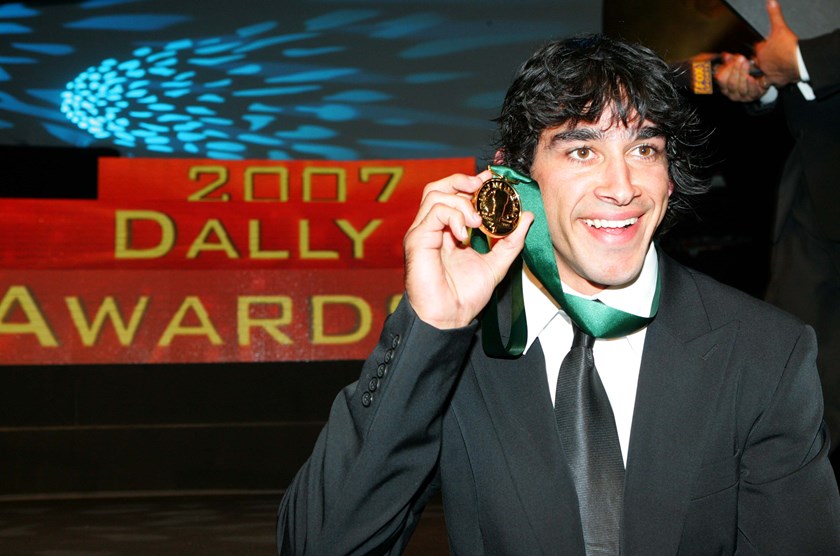
Thurston has four Dally Ms, Johns has three. Thurston has three Golden Boot awards to Johns’s two but the award was not handed out early during the first five years of his career and if judged correctly - not always a given with that award - he would have added another one or two.
They were each pin-point goalkickers, superb leaders and the undisputed halfback king during their playing days but, as the always astute readers of NRL.com have voted, Thurston was Simply The Best.
NRL Classic: State of Origin III, 2002
Against
NRL.com senior reporter Brad Walter
The best halfback and possibly the greatest player the game has seen only wore the No.7 jersey in 12 of his 23 Tests for Australia and 16 of his 23 State of Origin appearances for NSW.
It’s those statistics that may have influenced more voters in NRL.com’s poll to decide the top halfback of the Simply The Best era was Thurston.
Thurston was an outstanding playmaker - one who snatched so many victories for the Cowboys, Maroons and Kangaroos through sheer individual brilliance and an attitude of never giving up.
Who can forget Thurston’s extra-time field goal to secure North Queensland’s first grand final triumph in 2015 or his sideline conversion with his injured shoulder dangling by his side in the dying minutes of Origin II in 2017.
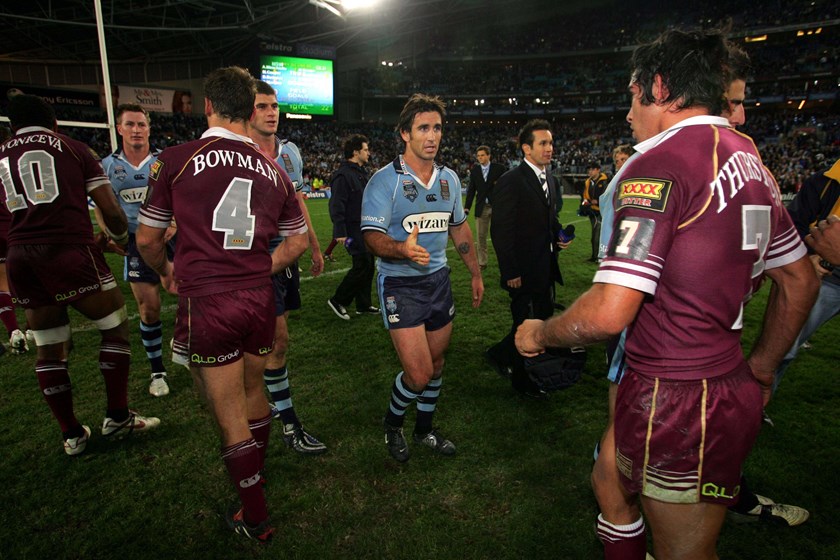
It levelled the series for the Maroons, who went on to win the decider without Thurston, but it was his last act in a representative jersey after it was discovered he had suffered a broken shoulder that sidelined him for the remainder of the year.
Those moments are still fresh in our minds whereas the career of Johns ended after round three of the 2007 season, when it was discovered he had a bulging disc in his neck that was within one centimetre of his spinal cord.
For those privileged to watch Johns players, his brilliance will forever be remembered but an examination of his playing record does not do justice to the former Newcastle Knights superstar.
It’s possibly just as well that Johns became the eighth Immortal just five years after retiring because it is almost impossible to appreciate how good he was without having seen him play.
Johns broke scoring records in his first start for Newcastle against South Sydney in 1994 and his debut for Australia against South Africa at the 1995 World Cup but the only significance of those feats is they signalled the arrival of a special player.
Injuries restricted him to a tick under 250 appearances in 15 seasons for the Knights and just 23 Tests for Australia, in which Johns was listed at hooker 10 times and five-eighth once.
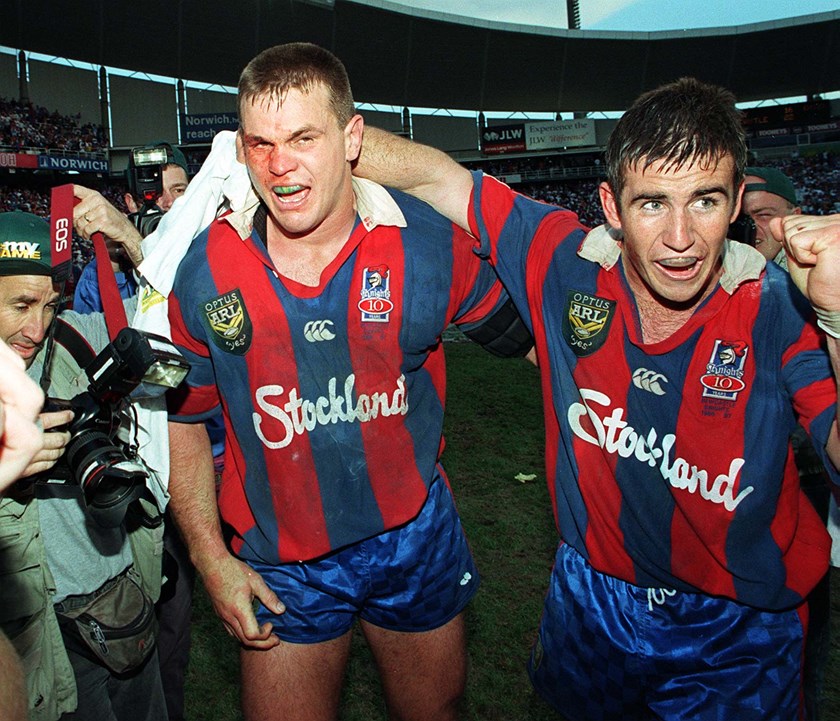
What many don’t realise is while he wore the No.9 jersey during the 1995 World Cup, Geoff Toovey played dummy-half but the Manly halfback was unable to pack down in scrums due to a neck injury so Johns was listed as hooker in the triumphant Bob Fulton-coached team.
With Super League players returning to the fold after the Super League war, Allan Langer regained his Australian No.7 jersey under the coaching of Wayne Bennett in 1998, with Johns playing hooker and then five-eighth when Kevin Walters was injured in a training mishap at Carlaw Park.
Chris Anderson took charge of the Kangaroos in 1999 and after winning the premiership with Brett Kimmorley at halfback in Melbourne, he wanted Johns and his former Newcastle understudy both in the team.
There was no outstanding hooker between the retirement of Steve Walters and emergence of Danny Buderus so it was a combination that served Australia well and helped deliver the 2000 World Cup as part of an all-star spine that included Brad Fittler at five-eighth and Darren Lockyer at fullback.
However, Johns only played out of position to accommodate the others and his vision and ability to fire long passes or kick out of dummy-half added another dimension to the Australian team when he performed the role.
In fact, it is likely Johns still would have been considered one of the game’s greats if he had played his entire career in the No.9 jersey as his style of dummy-half play could be compared to Buderus or Cameron Smith, who are regarded as two of the best hookers.
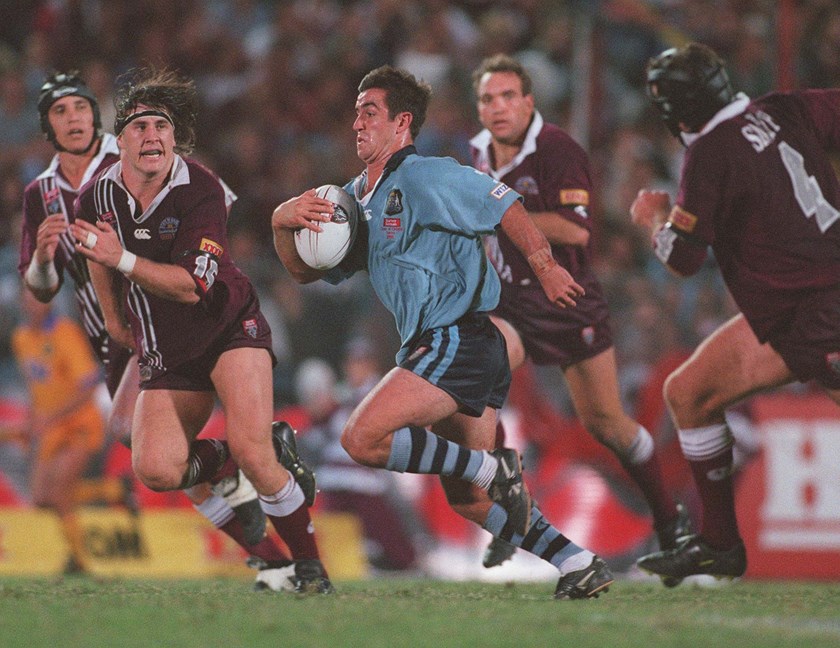
Remarkably, Johns was able to make the adjustment from playing halfback week-in and week-out for the Knights (he never played hooker at club level) to 80 minutes in the middle at representative level when chosen at dummy half – something Ben Hunt has found difficult in recent seasons.
Yet it was as a halfback that fans would drive miles to watch Johns play in the belief he was a special talent like few the game had seen.
Rarely did they come away disappointed as the dual Golden Boot winner and three-time Dally M Medallist spearheaded Newcastle to two premierships in five seasons and prompted a desperate bid from Rugby Australia for him to switch codes before the 2003 World Cup.
What set Johns apart was his ability to find support players with bullet-like passes, an innovative and precision-like kicking game featuring a range few others could master – from pin-point grubbers, to swirling bombs and banana kicks - and his toughness.
Johns played what was in front of him but he was also a great organiser and there was a structure that made it appear like he was several plays ahead of everyone else.
With Johns directing play, the Knights had attacking threats all over the park but he was the one who usually decided whether to pass short or long, turn the ball inside, grubber, bomb or go himself – and opposition defences were often mesmerised.
He rarely made a wrong call and an example of his football intelligence was the winning play in the 1997 grand final when he jumped into dummy-half and ran down a narrow blind-side before passing inside for Darren Albert to score.
It was Newcastle’s last chance at snatching victory and while most assumed they would set up for Johns to have a shot a field goal, he had noticed while studying footage of Manly in previous matches that John Hopoate had a habit of moving slowly from marker and took advantage.
The views in this article do not necessarily express the opinions of the NRL, ARLC, NRL clubs or state associations.

